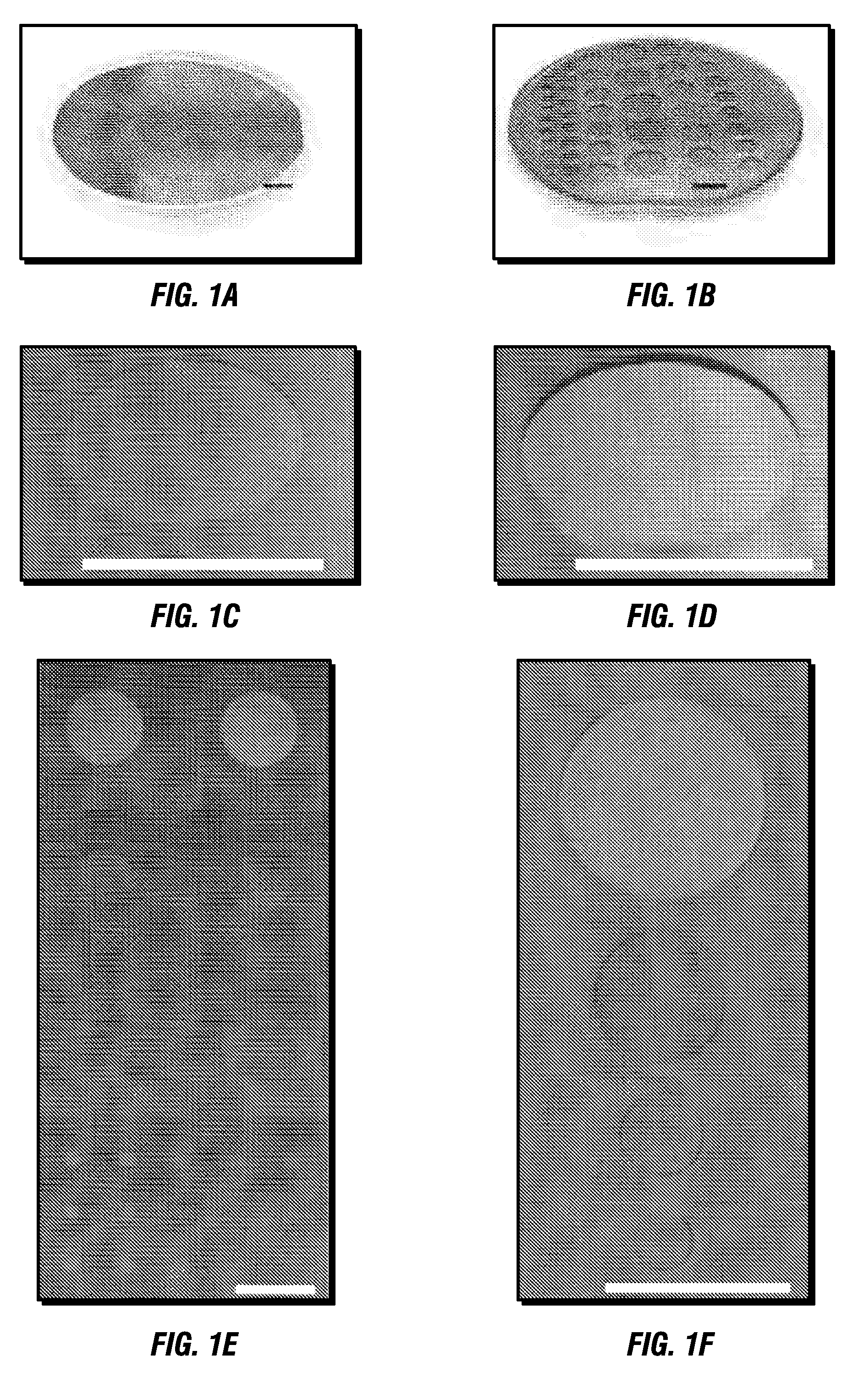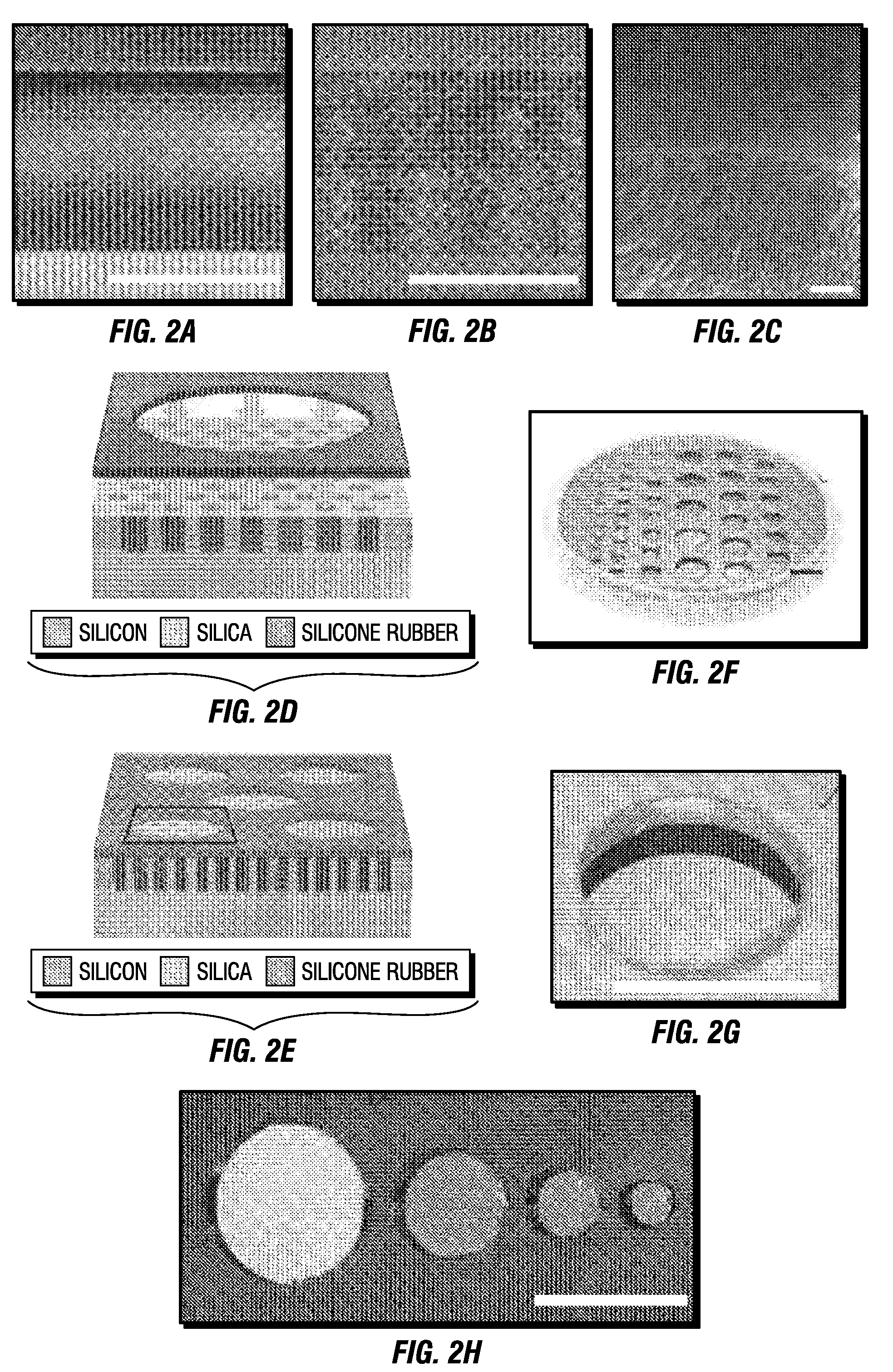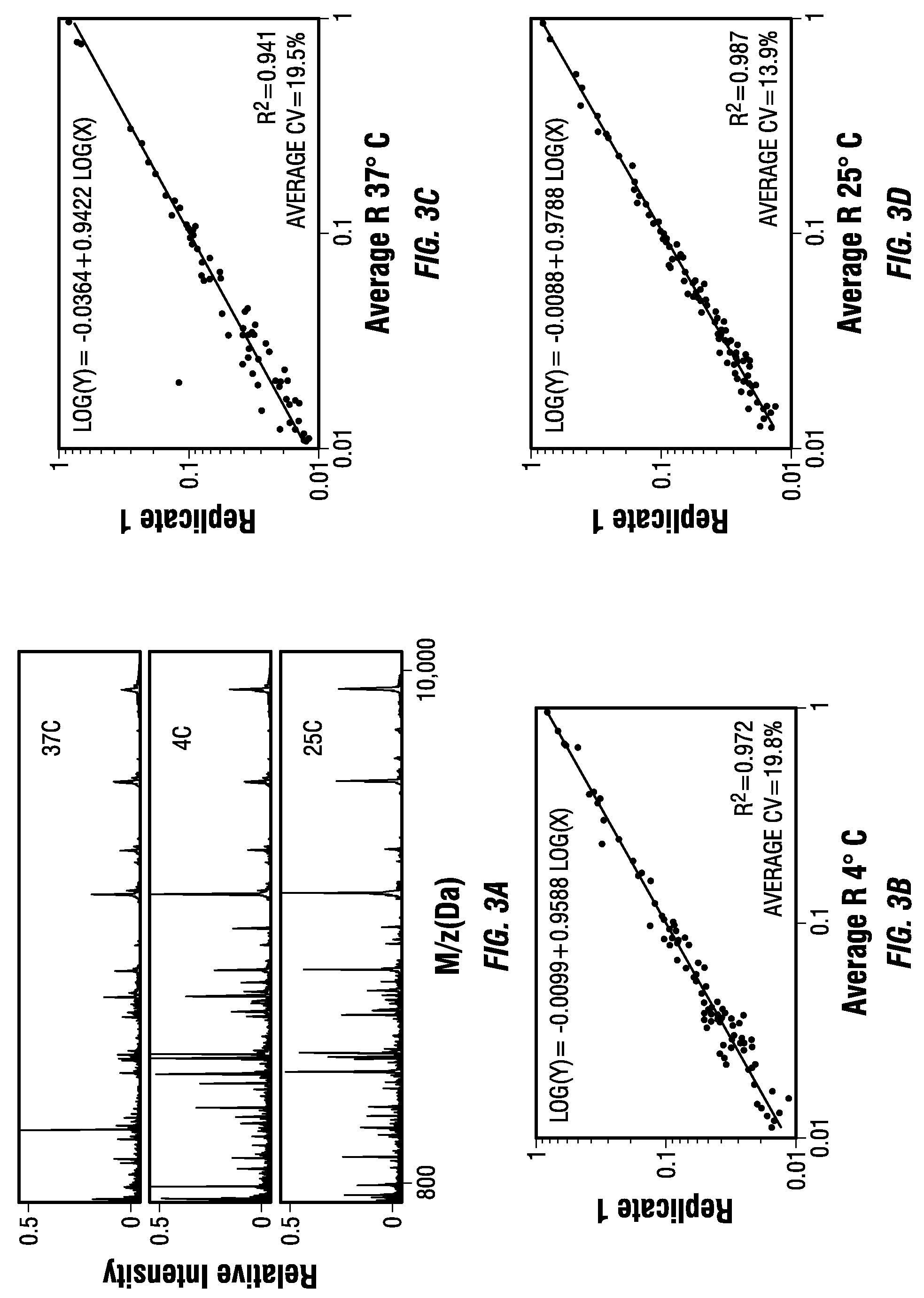Combinatorial multidomain mesoporous chips and a method for fractionation, stabilization, and storage of biomolecules
a mesoporous chip and multi-domain technology, applied in the field of nanoporous, mesoporous objects, can solve the problems of low molecular weight (lmw) species detection and remains a critical challenge, and achieve the effects of high protein recovery, low protein recovery, and plateauing
- Summary
- Abstract
- Description
- Claims
- Application Information
AI Technical Summary
Benefits of technology
Problems solved by technology
Method used
Image
Examples
example 1
Example 1.1
Fabrication of Mesoporous Proteomic Chips
[0106]The coating solution was a mixture of a tetra-ethyl-orthosilicate (TEOS) as silica source, solvent, water, acid, and surfactant polymer at designed ratio. The stock solution was prepared first: 10 g of TEOS (Sigma Aldrich) was first added to a glass bottle followed by 8.5 g of absolute ethanol (Sigma Aldrich). Then, 1 g deionized (DI) water was added, and finally, 0.04 g of 0.07M HCl (Sigma Aldrich) solution was added. This mixture was stirred and heated to 60° C. for 90 minute. Then, the solution was cooled down, and aged at least two days before use. For Pluronic F38, F88, F108 and F127 tri-block copolymer (BASF) which are solid at room temperature, 4 g of the triblock copolymer was first dissolved in 8 g ethanol and 4 g water. Next the 8.7 g stock solution and the 1.2 g 1M HCl solution were added. The mixture was then vibrated on a Vortex mixer for 1 min, and processed by ultrasound for 5 min. The obtained clear solution w...
example 1.2
Protein Fractionation, Stabilization and Storage
[0107]The MSCs for protein fractionation and enrichment of the LMW species were employed using a fast three step on-chip fractionation strategy, and showed the correlation between pore size, the molecular weight of the trapped species, and the enrichment of the LMW standards. The use of MS profiling to correlate a disease with the specific changes in the circulating proteins is a promising tool to improve diagnosis, to allow the design of personalized therapies and to follow their efficacy in real time and with low invasiveness. However, several publications reported that pre-analytical sample management may lead to significant alterations of the proteomic profiles and the generation of possible artifacts. Reproducibility and reliability of the approach are crucial for any clinical applications. The consistency of the on-chip fractionation assay was assessed at different working temperatures (FIG. 3), and by reproducing the same experi...
example 1.3
Protein Fractionation Experimental Procedure
[0108]The MSC surface was wetted using isopropanol, washed with sterile H2O, and air dried. For each experiment, a sample amount of either plain human serum, or a solution containing different dilutions of recombinant peptides and proteins, was pipetted into the circular area defined by the different masks. Unless otherwise specified, for all the experiments shown in the paper 10 μl of sample were used for each analysis. The samples were incubated for 30 minutes in a wet chamber (100% humidity) to prevent sample evaporation. In order to identify the best working condition experiments were performed at either 4° C., 25° C. (RT), or 37° C. RT was selected as the optimal temperature and used for all the experiments showed in the paper. MSCs were washed 5 times with 15 μL of sterile, deionized water, allowing the droplets to rest on the surfaces for 0.5 minute for each wash. The chips were dried after the washing steps, and stored for up to 3 ...
PUM
| Property | Measurement | Unit |
|---|---|---|
| pore size | aaaaa | aaaaa |
| pore size | aaaaa | aaaaa |
| pore size | aaaaa | aaaaa |
Abstract
Description
Claims
Application Information
 Login to View More
Login to View More - R&D
- Intellectual Property
- Life Sciences
- Materials
- Tech Scout
- Unparalleled Data Quality
- Higher Quality Content
- 60% Fewer Hallucinations
Browse by: Latest US Patents, China's latest patents, Technical Efficacy Thesaurus, Application Domain, Technology Topic, Popular Technical Reports.
© 2025 PatSnap. All rights reserved.Legal|Privacy policy|Modern Slavery Act Transparency Statement|Sitemap|About US| Contact US: help@patsnap.com



